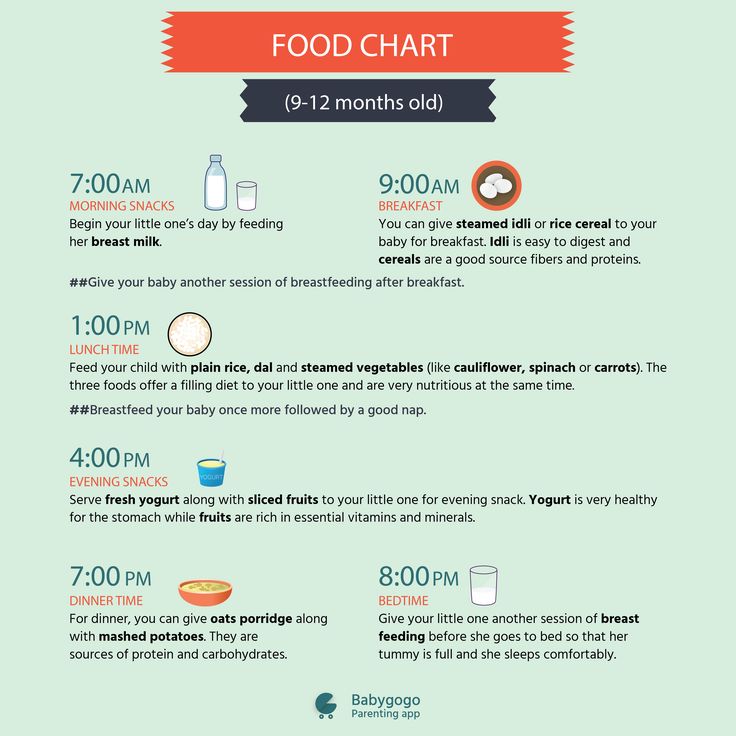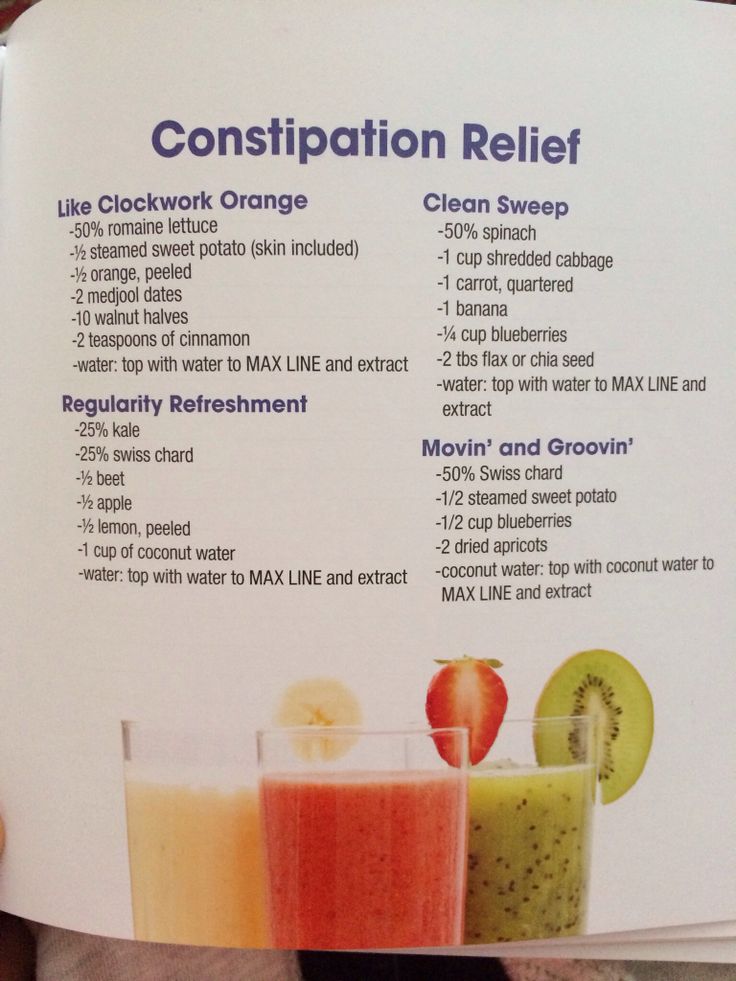How do birds decide which baby to feed first
Nature bird study reveals how parents choose who goes hungry
Nova Scotia
Humans have long known that the early bird gets the worm, but it turns out the hungry chick often gets nothing.
Social Sharing
In tough times, bird parents ignore cries of hunger and feed the healthiest chicks
Mat Wilush · CBC News ·
In tough times, mother birds feed the healthiest chick. (Shutterstock/TTstudio)Humans have long known that the early bird gets the worm, but new research just gave us a fresh aphorism: it turns out the scrawny chick often goes hungry.
Speaking on CBC's Mainstreet, "Turf Guy" Andrew Hebda said a new study looked at how mother birds split their worms among their young.
"If all things are equal and food is available, there's no issue," said Hebda, a biologist at the Museum of Natural History in Halifax.
Raising a brood successfully puts a metabolic demand on breeding birds that is the equivalent to a human cycling the Tour de France.- Nature study
"But if food becomes scarce, they [mother birds] look for other signals. In other words, they look and see who has the better chance of surviving in these conditions."
The study, recently published in Nature, found that mother birds may choose to neglect begging chicks in favour of larger, healthier chicks.
"Surprisingly ... in a quarter of species studied, parents ignore begging chicks. Furthermore, parents in some species even neglect smaller chicks that beg more and preferentially feed the biggest chicks that beg less," the study authors write.
It's brutally pragmatic: by sacrificing the weak so that the strongest are fed, the mother bird increases its chance of passing along its genes.
Mother birds decide whom to feed based on health-indicating factors such as size and beak colouration.
Nova Scotian birds spared brutal calculation
The study included data from 306 studies that looked at over 140 species of birds. A few common species from Nova Scotia were included in the study, including swallows and starlings.
Hebda says Nova Scotia's climate means mother birds rarely have to make such difficult choices.
"The supply of food here is quite consistent, so most of the species that we have will produce large broods," Hebda says.
So rest easy this spring, knowing that those chirping chicks are probably going to be fed soon. The study found that in good times, parents feed the scrawny, hungry chicks first.
"In many species, including our own, the production of offspring represents the most energetically demanding stage of an animal's life," the study says.
"Raising a brood successfully puts a metabolic demand on breeding birds that is the equivalent to a human cycling the Tour de France. Success or failure often depends on parents' ability to determine which offspring to invest in, when to invest in them and how much to invest. "
"
With files from Jon Tattrie
CBC's Journalistic Standards and Practices|About CBC News
Corrections and clarifications|Submit a news tip|
How do bird parents decide who to feed first? – Bond with your bird
The reproduction process is one of the most taxing procedures in both humans and birds. Post the process, feeding the offspring is tougher. The pressure on birds to feed their offspring is more as they have a larger clutch size.
Bird parents decide who to feed first mostly based on natural instinct or love for a young offspring. The food is mostly provided open to all by the parent and the fittest may get the first bite. Based on experiments, adult female birds were giving preference in feeding the UV-reflecting offspring.
The answer depends on the type of scenario that the offspring are being raised in.
- Scenario 1- Nestlings hatch on a young spring morning in an urban household garden with ample food around, in such a scenario, all the offspring get their share of food.
- Scenario 2- It’s the winter season and food is scarce, in this situation the bird parents have to choose which offspring to feed and they choose the strongest offspring that has the largest chances to survive and carry the genes ahead, thus the weaker ones are left behind.
Each baby bird in the nest does not get an equal amount of food. To get fed, they evolve different signals like begging behavior, vocalizations, and open mouths. Yet, how parents react to this information varies from species to species. For example, Tree swallows feed the chick begging the most unlike the blue-footed booby ignores the begging̣.
5 major ways in which bird parents decide who to feed first- Sibling Rivalry- In a nest full of chicks that are begging for food; bigger and stronger chicks push the weaker siblings off the nest in competition for food.
 The stronger chick also shrieks the loudest which is also why they are fed and that’s how they become strong in the first place, it’s a cycle that repeats.
The stronger chick also shrieks the loudest which is also why they are fed and that’s how they become strong in the first place, it’s a cycle that repeats. - Availability of resources- While feeding, birds shift to insects as they are richer in proteins. According to research, the availability of food is the biggest determinant of which offspring is to be fed. If resources are available the distribution is equal but in uncertain surroundings, the emphasis lies on strength, and the chick with structured signals is fed. Parents also tend to react less to begging in case of food unavailability because everyone is hungry.
- Survival of the fittest – As mentioned earlier, the cycle of getting fed simply depends on the “survival of the fittest” rule. The stronger the chick, the louder shrieking cry for food which gets them fed more. Additionally, if parents had to choose, they go with the strongest chick that has the largest chance of survival.

- Parental Instinct- Adult birds that feed have a strong memory that reminds them which offspring was fed when and who’s been starving the longest. You can call this a parental instinct or a strong memory but the parents know everything!
- Natural Factors- Environmental predictability determines the clutch size. Birds only produce the number which they will be able to feed and survive.
According to a new study, researchers have come across a unique method through which bird parents decide which offspring to feed.
Ultraviolet reflectance in young birds is also a form of communication that helps the parent decide which offspring to feed. In an experiment conducted, adult female birds were giving preference to UV- reflecting offspring but male birds had no preference. This shows the importance of Ultraviolet reflectance in bird communication patterns.
Researchers have studied these patterns in two species of migratory birds. Alpine Swift and European Starling communicate by modifying their UV (ultraviolet) signal.
Alpine Swift and European Starling communicate by modifying their UV (ultraviolet) signal.
- UV light reflected by the body skin of an offspring is proportional to the physiological differences of siblings in a brood.
- Parental bias increases as the season progress.
Another observation that came out of the experiment. Initially in the breeding season parent bird prefer less reflective body skin (UV pale – that is small stature) but in the latter part as conditions deteriorate parents get biased toward an offspring which have more reflective skin (UV bright – that is large body mass and skeletal size )
More complex and intricate signals which parents look for in their offspring other than their begging calls and size are:
- Begging amplitude
- Latency
- Duration between feeding
- Likelihood
- Call structure
- Posture
- Carotenoid saturation of gape or flange
- Specialized feathers and skin patches
Nestlings are demanding, hungry, and need to be fed constantly.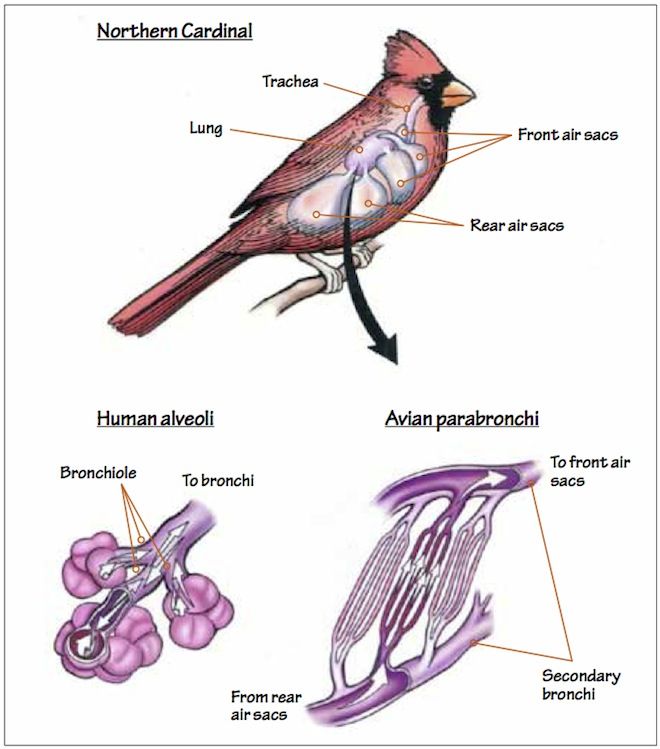 There are subtle signs in their behavior from which a parent can tell when their nestlings need to be fed. These signs vary from species to species but include – making noises, shaking, opening their mouths wide open for the food. Small birdies continue with their sleep between meals when they are not hungry. They are usually fed insects by adult birds for high protein. Adult birds kill the insect and make the food soft and moist to feed.
There are subtle signs in their behavior from which a parent can tell when their nestlings need to be fed. These signs vary from species to species but include – making noises, shaking, opening their mouths wide open for the food. Small birdies continue with their sleep between meals when they are not hungry. They are usually fed insects by adult birds for high protein. Adult birds kill the insect and make the food soft and moist to feed.
When a chick is starving it has a specific call voice through which a parent knows the intensity of hunger and how long the nestling has been hungry for.
Research by German and Swiss ornithologists have shown that parent birds can hear the changes in calls of their offsprings. Kenyan researchers have discovered that birds can change their calls. As their stomach rumbles their call frequencies change which indicates the intensity of hunger.
What do birds feed their baby birds?
Different ways parent birds feed their baby birds are as below.
- Protein-rich diet– Young ones need protein-laden food to grow. Insects and worms do the task for birds.
- Some birds feed milk– Birds produce crop milk which is like mammal milk. It gets produced by sloughing of special cells. Pigeon milk is the best in crop milk, both sexes produce it.
- Nocturnal birds– Nocturnal birds like owls and nighthawks hunt insects at night and feed their children.
Communication between the offspring and parent birds make for an interesting read. Researchers continue to dig deeper and understand more about the same. We have already discussed the feeding practices of birds in different environmental contexts. Abundant food leads to fewer conflicts in nestlings. Whereas in uncertain surroundings parents respond to quality rather than need.
Birds in winter | How to help birds in winter
02/11/2015
Good deed or how to help birds in winter
In this article, in brief, we will try to answer the questions: what birds winter in central Russia; the meaning, diet, features, timing and norms of feeding birds in winter; types of bird feeders; how to properly place the feeder. What is it for? It is necessary in order, first of all, not only not to harm the birds, but also to facilitate their existence in difficult winter times.
What is it for? It is necessary in order, first of all, not only not to harm the birds, but also to facilitate their existence in difficult winter times.
Birds are one of nature's natural self-regulators.
Some birds destroy insects, thereby saving trees and shrubs from harmful insects. Others feed on the fruits of trees and shrubs, spreading them around, increasing the forest zone. Still others are mostly birds of prey, they are called feathered orderlies, live in forests, feed on mice and small birds, mostly sick or weakened.
More than 300 species of birds are found in the Moscow region, some constantly nest here, others can be seen in the warm season, others, on the contrary, only in winter, others migrate in transit and can be seen when they stop to replenish their strength between flights.
All this diversity of birds has its own habitat - some settle everywhere, others prefer a certain habitat: reservoirs, bolts, forests, meadows, farmland places and cities. This is largely due to the "diet" of birds.
This is largely due to the "diet" of birds.
In central Russia, in addition to a large and diverse family of passerines, you can meet representatives of various waterfowl, predators.
The seasonal behavior of birds is greatly influenced by the diet of birds.
Those birds, whose basis of nutrition has a pronounced seasonal character (insects, frogs), practically all migrate to where they can find food - to "warm lands". These include birds whose habitat disappears with the onset of cold weather. Starlings, wagtails, larks, black-headed gulls, warblers, swans, etc. are prominent representatives of this group.
Birds with a plant-based diet are most often sedentary (for example: fieldfare thrush, spotted woodpecker, black-headed goldfinch), although some may migrate to places where they can find their favorite food (for example: long-tailed tit ).
Birds of prey can also be divided into migratory and sedentary.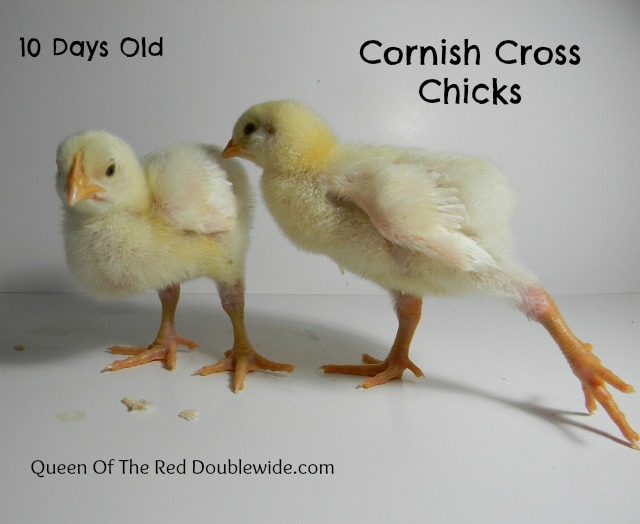 The reason for their migration is mainly the presence or absence of food supply. Their migration is mainly related to the search for food.
The reason for their migration is mainly the presence or absence of food supply. Their migration is mainly related to the search for food.
There is another category of birds, the so-called "city dwellers", which lead a settled way of life and are a constant companion of man. These primarily include the gray crow, pigeons and sparrows.
Importance of bird nutrition in winter
Many have thought about how hard it is for birds to survive in winter?
It has long been known that many birds die in winter not because of the cold, but because of the lack of the usual good nutrition. Therefore, in order to preserve the bird population, many of them need additional feeding.
Winter is a difficult time of the year for all birds, but not because of the cold and frost, but because with the onset of cold weather, their food supply disappears or is significantly reduced. In order not to freeze, they need a lot of energy for warming, and for this you need to constantly replenish it - eat, and more often and more than in the summer. “Frost is not terrible for a well-fed one” - this can be said about birds. The winter day is short and the birds have little time to search for food. Therefore, birds tend to go where it is easier to find food and where you can hide from the winter cold - to cities, towns, villages closer to people.
“Frost is not terrible for a well-fed one” - this can be said about birds. The winter day is short and the birds have little time to search for food. Therefore, birds tend to go where it is easier to find food and where you can hide from the winter cold - to cities, towns, villages closer to people.
Feeding birds in winter taking care of nature
Bird feeders are not just about taking care of our little brothers, but also taking care of yourself.
Imagine if all the birds destroying pests disappeared at once - the consequences would be simply catastrophic, which would threaten humanity itself.
First of all, this applies to small representatives of the feathered family remaining for the winter, in the diet of which there is plant food, as well as various insect pests. In winter, many of these birds move closer to humans, to cities, towns and villages, because here it is easier for them to feed and survive.
Properly organized top dressing will help more birds survive in winter, their gratitude in summer is the destruction of pests in forests, parks, squares and household plots.
Wintering birds or which birds stay wintering
First, let's look at some birds whose food is based on insects, they are most vulnerable in winter. Usually these are representatives of the sparrow order and more than others need human help. These birds can be attributed both to urban birds and to the inhabitants of parks, alleys, gardens and other urban green areas of large and small cities.
| Great Tit | | Long-tailed Tit |
| In summer, it lives in forests of various types, outside settlements, in large parks, rarely near human habitations. In winter - lives closer to people. | | Lives in different types of deciduous forests. In Moscow and the Moscow region, it can be found in birch and alder forests of forest park areas. Some birds lead a sedentary lifestyle, stay for the winter and live near their nesting sites. In winter it eats small seeds. Often they can be seen in flocks of great tits. |
| | | |
| Great spotted woodpecker | | Lesser spotted woodpecker |
| The most common type of woodpecker in the Moscow region. | | A species common for the central European zone, found on forest edges, in river valleys, in parks. It does not fly away for the winter, a frequent visitor to bird feeders in parks. |
| | | |
| Muscovy or Little Tit | | Blue Tit |
| In Moscow and the Moscow region - a common species, found only in large forest parks, where coniferous trees predominate. Food is prepared in the summer. | | Common inhabitant of Moscow region and Moscow deciduous forests and parks; in the city often settles in the yards. It nests in hollows of trees, in holes in concrete lampposts, in chimneys of fences. For the winter, some birds remain in nesting places, some migrate. Titmouse flock to bird feeders, especially often in years of poor seed harvest. Here they feed on peanuts, sunflower seeds, unsalted lard and leftover food. |
| | | |
| Bullfinch | | Field and house sparrows |
| Our winter guest from the Arctic, migrates to central Russia with the onset of the first cold weather. | | The most widespread birds in Russia. The field sparrow is a common inhabitant of the countryside and Moscow parks, the brownie is a resident of cities and large towns. Lives everywhere in Moscow. |
| | | |
| Fieldfare thrush | | Black-headed goldfinch |
| A typical view for the Moscow region. Lives along the edges of the forest or in copses, next to fields and meadows. | | Common bird for the Moscow region. It occurs along the edges of forests, in copses; often settles on the outskirts of villages, in gardens and parks. In winter, it keeps to wastelands, where weeds stick out from under the snow, but sometimes it is not averse to feasting on the contents of bird feeders. |
| | | |
Let's talk about other wintering birds
Pigeons and hooded crows are typical city dwellers.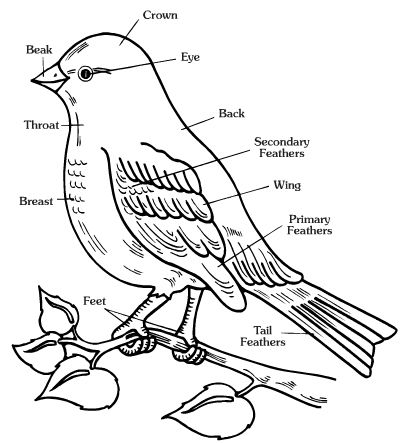
Gray Ravens
This is one of the most intelligent birds, the main habitat of large and small cities. They are omnivores. Choose places where they are least disturbed. Mostly kept in packs, in which a hierarchy can be traced. Very often they behave aggressively, especially during the period of rearing chicks.
It does not need feeding, because it will always find where and what to profit from. They can also be called the city feathered orderly.
City pigeons
Man has had a very great influence on the distribution and population of these birds, these are the most numerous city birds that originated from the wild rock dove. However, before these birds learned to live next to humans, they went through a long history of domestication.
City pigeons want to eat all the time, but they don't make feeders for them. In addition, these are collective birds, and if at first one dove appeared, then in a couple of minutes a whole flock of them can fly together. City pigeons remember very well the places where they are fed. The average life expectancy of urban pigeons is 2-3 years, while wild pigeons live 12-15 years. This is primarily due to nutrition and population density. Pigeons, like other birds, are contraindicated in “crumbs from the table” and any other food containing various fats. It is best to feed pigeons with various cereals, grains and legumes, seeds that are not fried or salted, as well as raw chopped vegetables and fruits.
City pigeons remember very well the places where they are fed. The average life expectancy of urban pigeons is 2-3 years, while wild pigeons live 12-15 years. This is primarily due to nutrition and population density. Pigeons, like other birds, are contraindicated in “crumbs from the table” and any other food containing various fats. It is best to feed pigeons with various cereals, grains and legumes, seeds that are not fried or salted, as well as raw chopped vegetables and fruits.
City pigeons are probably the only bird that is highly dependent on humans. Therefore, to feed or not, everyone decides for himself.
Wintering water birds include:
Mallards
They dominated the ice-free city ponds.
The basis of their diet is vegetation (seeds, leaves and stems of grasses, sedge, duckweed, hornwort, pondweed, mustard, cereals, rice-like leersia, strepoloist, barnyard), insects (grasshoppers), mollusks, fish caviar, earthworms, frogs, tadpoles, snails and slugs (especially for young birds).
For feeding, it prefers shallow water (no deeper than 35-40 cm), so that it can reach the bottom with its beak.
Gogoli
Second in number, but still a common inhabitant of city ponds and streams.
Feeds mainly on aquatic invertebrates. In summer, the basis of the diet is insects and their larvae - caddisflies, bloodworms, water beetles, dragonflies, bedbugs, midges, etc. In winter, it eats more mollusks and crustaceans. It also feeds on earthworms, amphibians and small fish; in autumn, small amounts of seeds, roots and vegetative parts of aquatic plants.
City ducks are very often killed due to malnutrition.
It is not recommended to feed ducks, oddly enough - bread, it does not contain elements useful for the bird and creates a feeling of satiety, as a result, the duck stops looking for other food. It should be noted that soaked bread pollutes the water and leads to the death of some inhabitants of the aquatic environment. It is advisable to avoid peanuts, milk, and any foods that contain saturated fats.
It is advisable to avoid peanuts, milk, and any foods that contain saturated fats.
If you really want to help waterfowl, the best food to use is:
- grated cheese;
- soft fruits and vegetables (for example, strawberries, or soft apples), exotics are also allowed, for example, bananas;
- oatmeal, in the form of cereals or breakfast cereals.
It is useful to give these products to ducks, especially in spring, when the chicks are hatching. Of the neutral products that at least will not harm the birds, but will not bring any benefit - potatoes, cabbage, worms, small fish.
Some features of bird feeding in winter
Our desire to help birds can be described as "Good deed". Many of us arrange feeding grounds and feeders for birds. But in order for our good intentions not to turn into disaster for the birds, it is necessary to follow some rules in feeding:
1. Constantly, as the feed is used up, but no more than once a day, replenish the feeders. Moreover, it is desirable to do this in the morning, approximately at the same time.
Constantly, as the feed is used up, but no more than once a day, replenish the feeders. Moreover, it is desirable to do this in the morning, approximately at the same time.
2. It should be borne in mind that fried or salted seeds, lard, meat are contraindicated for birds - this is poison for them.
3. Do not feed the birds with crumbs of black or rye bread, this can lead to their death.
4. Never give rancid grain, moldy, musty food to birds, as they produce toxins that are deadly to birds.
5. Millet should not be given to birds, as it does not have a shell, which leads to the oxidation of fats on its surface, the appearance of toxic substances, pathogens.
6. You can't just overfeed the birds, so it is recommended to renew the contents of the feeder no more than once a day.
Best for feeding birds:
1. Millet, oats, wheat - the most versatile food that attracts birds that feed on various seeds and cereals.
2. Sunflower seeds - universal food for wintering birds. A large amount of vegetable fats contained in them are an important source of replenishment of energy in conditions of winter cold.
3. Lard, meat - can also be used for winter feeding of birds. They are very fond of some types of birds. But it is worth remembering that this food should be unsalted and not subjected to heat treatment. This top dressing should be placed in such a way that it would not go to crows, magpies, jackdaws, cats and dogs. Usually it is hung on ropes near the feeders or on special perches in bird feeders.
4. Dried mountain ash and hawthorn - you need to prepare and dry in advance, from autumn. They attract the most beautiful winter feathered representatives - bullfinches and waxwings.
5. Maple and ash seeds - their seeds are also called lionfish. They mostly fly from trees in autumn and become inaccessible to birds. Lionfish are harvested in autumn and hung on feeders.
6. Cones, acorns, nuts are the main diet of some birds. Having prepared them in the fall, you can attract woodpeckers and jays to your bird feeder.
Many specialized stores sell ready-made bird food, which makes it much easier for you to feed birds in the winter.
Terms and norms of bird feeding
In central Russia, the duration of the feeding season is 180 days (October-March).
The total length of the feeding season depends on climatic conditions, natural forage yield, and other factors.
It makes no sense to start feeding the birds if the weather is calm and warm in October, and there is still enough natural food in nature. Top dressing in the month of October should be started under adverse weather conditions - early cold, rainy weather, early snowfall, as well as crop failure of natural fodder.
The most difficult period - absolute starvation comes only with the freezing of the soil or the fall of deep snow cover.
Therefore, the feed rate should be distributed over periods:
The first period - bait, is approximately 30-45 days (from October 15 to November 30). This is the time to accustom the birds to the feeders. Feed is laid out in an amount of no more than 15-20% of the norm (as long as the birds are reluctant to eat them).
The second period is the main, the most responsible and lasts about 90 days (approximately from December 1 to March 1). At this time, the birds are especially in need of feeding, so they need to be given a full feed rate. However, it is not recommended to overfeed birds, especially with sunflower seeds - birds stop consuming a variety of natural foods (believing that they are well fed here), and this reduces their natural resistance to infections, and they become overly dependent on feeding and as a result - when it is stopped, although For 2 days the birds often die.
The third period - the final one, lasts about 10-25 days (approximately from March 1 to March 25).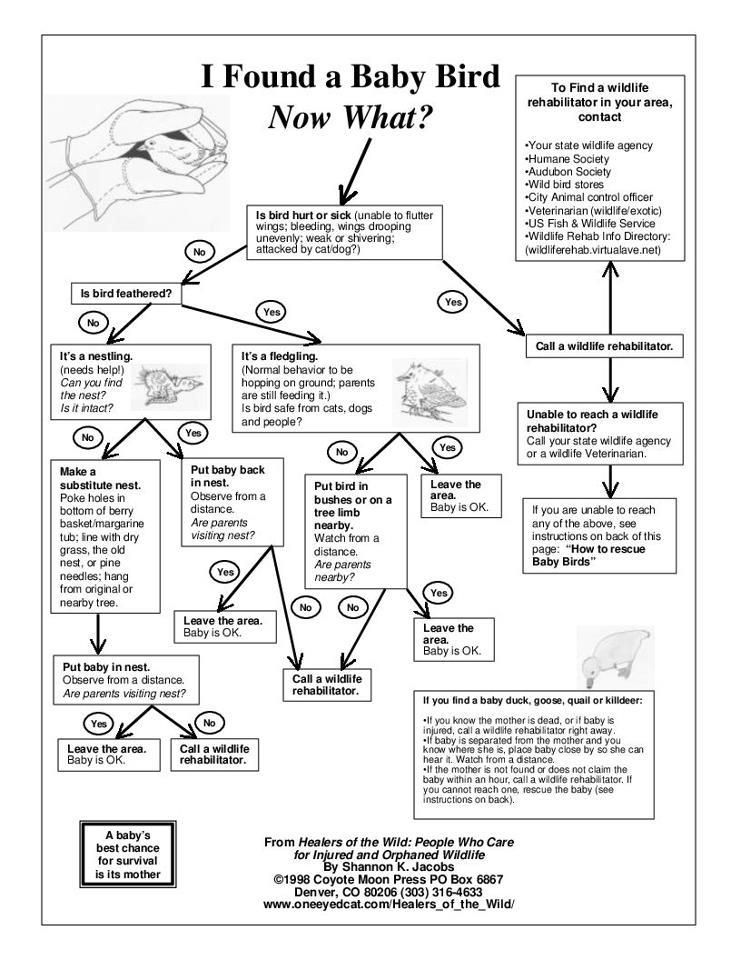 During this period, 60-80% of the total norm should be laid out. But this period very often depends on the vagaries of nature, but in any case, top dressing should be continued until the first thawed patches appear on the ground.
During this period, 60-80% of the total norm should be laid out. But this period very often depends on the vagaries of nature, but in any case, top dressing should be continued until the first thawed patches appear on the ground.
In places where it is necessary to attract birds, it is possible to place not individual feeders, but entire feeding areas.
Stationary feeding grounds - areas approximately 5x5 or 7x7 m in size, feeders should be evenly spaced over this area. Feeding grounds for birds are usually arranged in places where it is convenient to serve them, and the birds will be the least disturbed. Usually these are alley parks, etc.
Approximate bird feed rates
Cereal mixtures (millet, oats or oatmeal, hemp or sunflower, oats, crushed wheat):
For one feeder per day - 200 g
For the whole season - 11.2 kg
Weed Seed Mix:
For one feeder per day - 200 g
For the whole season - 11. 2 kg
2 kg
Meat:
For one feeder per day - 50 g
For the whole season - 2.8 kg
At the same time, top dressing should be organized in such a way as to attract no more than five birds to one feeder, because. the accumulation of a large number of birds in one place increases the risk of infection with various diseases.
Types of bird feeders
This is where the fantasy can unfold!
Various materials can be used to make feeders - wood, plastic, cardboard and various combinations thereof.
The simplest options are feeders made from plastic bottles, milk or juice bags.
It should be warned that those feeders where continuous (permanent) addition of feed in excess of the norm are provided are very undesirable. As mentioned above, birds need to be fed, not overfed. An overfed bird moves less, which is why its metabolism slows down in its body, resistance to diseases decreases and they die.
When making bird feeders, there are a few simple guidelines to follow:
1. Feeders must be sized for the birds you choose to feed. Everyone knows that where crows and doves appear, there is no place for other birds.
2. The feeder must have a roof (canopy) to protect the feed from precipitation (rain, snow). Wet food spoils quickly, and snow that has fallen makes access to food much more difficult.
3. It is advisable to pour the bird food into some small containers, which allows more economical use of feed, because. it is less scattered and lost, and also not to overfeed the birds.
4. If the feeder is closed, then the holes for the birds should be such that the birds could freely get inside, but you should not get carried away with large sizes, because. food can spill out through them, especially in strong winds.
5. Consider in advance how the feeder is to be attached. On a suspension bracket, to a wall, a post or a tree.
On a suspension bracket, to a wall, a post or a tree.
Making a feeder, along with feeding the birds, is an educational process and often labor intensive. In addition, not every parent can entrust "his child" with a hacksaw, drill, jigsaw and hammer, and making a feeder himself in the presence of a child is not entirely correct. Moreover, the manufacture of bird feeders can be made part of the labor education of boys, acquiring the skills of designing, assembling and working with a simple tool.
It often happens that there is a desire to do a good deed, but for some reason beyond your control, there is no such possibility, then ready-made sets will help you out.
Ready-made sets of bird feeders made of wood are sold unassembled, equipped with everything you need, so your child, under the supervision of a parent, will only need to spend no more than half an hour to assemble.
Tenth Kingdom, a Russian manufacturer of educational games, offers ready-made bird feeders Feeder dimensions: Feeder dimensions: Feeder dimensions:
Art.  No. 01639
No. 01639 Art. No. 01640 Art.
- height - 190 mm;
- length - 220 mm;
- width - 150 mm
- height - 200 mm;
- length - 135 mm;
- width - 200 mm
- height - 235 mm;
- length - 140 mm;
- width - 240 mm
What are the advantages of these ready-made kits:
1. The material of the feeders is sanded birch board.
The material of the feeders is sanded birch board.
2. Painting was done with harmless water-based paints.
3. Products are certified.
4. Safe for children because there are no sharp and small parts.
All these bird feeders are included in the Good Deed program.
You can buy your favorite bird feeder in the Tenth Kingdom manufacturer's online store.
Place bird feeder
Placement of feeders should be approached no less seriously than production.
The feeder should be placed in a quiet, calm place, always on the south side of a tree, edge (if in a forest clearing) or building.
So, where can you place bird feeders.
1. The first thing that comes to mind is to hang a feeder outside the window or on the balcony. First of all, because of the convenience of the person himself, but at the same time there are several nuances:
- The main and essential is garbage, both on your window or balcony, and from neighbors downstairs.
- It is harmful for the birds themselves, because. they do not always feel the barrier in the form of glass and can simply break.
- You should not even think about placing a feeder on the first floor window. In this case, birds can become easy prey for cats.
2. On a free-standing support, pole or tree trunk. For this, closed-type feeders are best suited to make it as difficult as possible for lovers to feast on birds.
3. On suspension. This is the safest way to place a bird feeder. Also an important feature of this placement is the possibility of birds flying up from any direction.
It should be noted that ornithologists are engaged in placing bird feeders and feeding birds in large forest park areas. They track the number of wintering birds, their species, weather conditions and, in accordance with this, select the composition and amount of food.
If the birds gather at the feeder in winter, it means that they need your help. And by helping the birds, you are doing a good deed not only for wintering birds, but also for yourself.
And by helping the birds, you are doing a good deed not only for wintering birds, but also for yourself.
Questions and answers
This table contains frequently asked questions and answers to them:
| How to make a bird feeder | A bird feeder can be made from any available material. The simplest options are from a plastic 2 or 5 liter bottle, hard (cardboard) milk or juice bags. Feeders made of wood are very popular, they can be given any design and shape, colors. Very often you can see combined feeders made of wood and plastic elements. Today you can buy various bird feeders, the assembly will take no more than half an hour, which even a child can handle. | |
| How to hang the feeder | First of all, you need to remember that the feeder would be inaccessible to predators, in a quiet, windless place and should be as illuminated as possible. | |
| What birds appear at the feeder in winter | Sparrows, tits, blackbirds, bullfinches, goldfinches, greenfinches and even woodpeckers. It depends on several factors: | |
| Feeding rates for birds | It is generally accepted that there are approximately 5 birds per feeder. The daily rate of feeding, depending on the "visitors" of the feeder, should not exceed grain mixtures - 200 gr, weed seed mixtures - 200 gr, meat or lard - 50 gr. | |
| When to start feeding birds. When to stop feeding birds. | The feeding season for birds lasts approximately from October to March, but may vary depending on weather conditions. Top dressing should be started when it becomes more difficult for the birds to get their usual food - with the onset of the first frost, snowfall, constant rain. | |
| Buy bird feeders |
90,000
GOODRMITE OF BILLS
3 Friends!
Colds are coming, and we traditionally begin to feed the birds, laying out food in feeders and hanging lard on trees. THE BOTANICAL GARDEN-INSTITUTE ACCEPTS BIRD FEED AND PROTEIN. We have a lot of feeders in the Arboretum, and in winter we regularly monitor their fullness. Well-fed birds survive the cold more easily and are more likely to survive until spring.
Feed the birds in winter!
Let from all over
They will flock to you like home,
Stakes on the porch.
Their food is poor.
A handful of grain is needed,
One handful - and they will not be afraid of winter.
How many of them die - do not count,
It's hard to see.
But in our heart there is
And the birds are warm.
Is it possible to forget:
Could fly away,
And they stayed to winter
Along with people.
Train Birds in the Cold
To your window,
So that without songs it was not necessary
We welcome spring!
Alexander Yashin
What can you feed the birds in winter
In winter, each type of bird eats a certain type of food. The species composition of visiting birds will also depend on what you pour into the feeder. The following are the main foods that can be used in winter top dressing:
1. GRAINS - MILLET, OATS, WHEAT
The favorite food of some birds are the seeds of various plants, especially cereals. Sprinkling millet or oats into the feeder will attract sparrows, goldfinches and other grain-eating birds. Birds in winter can be fed with wheat bran, hard oatmeal, poppy seeds, pearl barley. Some birds eat corn and watermelon seeds, which must be crushed beforehand. If you are interested in breeding useful birds in your garden, then in the fall prepare weed seeds - nettles, quinoa, burdock, thistles, and pour them into the feeder in winter. But keep in mind that this will be only an insignificant addition to the main feed. it is more correct to plant mountain ash, viburnum, hawthorn, buckthorn, bird cherry and other berry trees and shrubs on your feeding area.
Some birds eat corn and watermelon seeds, which must be crushed beforehand. If you are interested in breeding useful birds in your garden, then in the fall prepare weed seeds - nettles, quinoa, burdock, thistles, and pour them into the feeder in winter. But keep in mind that this will be only an insignificant addition to the main feed. it is more correct to plant mountain ash, viburnum, hawthorn, buckthorn, bird cherry and other berry trees and shrubs on your feeding area.
2. SUNFLOWER SEEDS
The most versatile food for wintering birds. It can be eaten by both granivorous birds and tits, nuthatches, woodpeckers. The large amount of vegetable fats inside sunflower seeds makes them an important source of energy in cold winter conditions. If there is monotonous food in the feeder, sunflower tits will look for additional protein animal food.
3. SALO, MEAT
These products can also be used for winter bird feeding. They are very fond of tits, nuthatches and some other species of birds. But it is worth remembering that only unsalted lard or meat can be offered to birds. As a rule, pieces of bacon are strung on twine, which is hung on tree branches. Top dressing from fat or meat should be placed in such a way that it does not go to crows, magpies, jackdaws, as well as cats and dogs.
But it is worth remembering that only unsalted lard or meat can be offered to birds. As a rule, pieces of bacon are strung on twine, which is hung on tree branches. Top dressing from fat or meat should be placed in such a way that it does not go to crows, magpies, jackdaws, as well as cats and dogs.
You can put a small piece of butter in the feeder. On especially frosty days, this product will help the birds survive.
4. DRIED ROWAN AND HAWTHORN, ROSE HIP, VELLOW
Berries of mountain ash and hawthorn attract the most beautiful winter birds - bullfinches and waxwings, mountain ash.
Dried berries and fruits. Make a bunch of dried fruits and berries. Using a needle, put pieces of dried apples, pears, plums, apricots on a strong thread, form a lump and hang near the feeder. You can offer the birds the pulp of a pumpkin. Cut through "windows and doors" in it, so that the birds can get inside. They themselves will choose what to try - seeds or pulp. Tie a small pumpkin by the tail with a strong rope and hang it from a thick branch.
Tie a small pumpkin by the tail with a strong rope and hang it from a thick branch.
Apples that start to spoil should also not be thrown away. Cut the apple in half, put it in a feeder or hang it on a wire.
5. MAPLE AND ASH SEEDS
The seeds of these trees are also called lionfish. Most of them fall from the trees and become inaccessible to birds. Lionfish are harvested in autumn and hung on feeders. Bullfinches, waxwings and some other visitors to bird canteens like to eat them.
6. FOREST NUTS, CONES, ACORNS
Cones are the main food of crossbills and woodpeckers in winter.
Jays have been stocking acorns since autumn, hiding them in secluded places. In winter, hidden food is a good help. Having prepared cones, nuts and acorns since autumn, you can attract not only woodpeckers and jays, but also squirrels to your feeder.
7. CALCIUM SUPPLEMENT
During the nesting period (not necessarily in winter), garden guests still need to be fed foods that contain calcium.

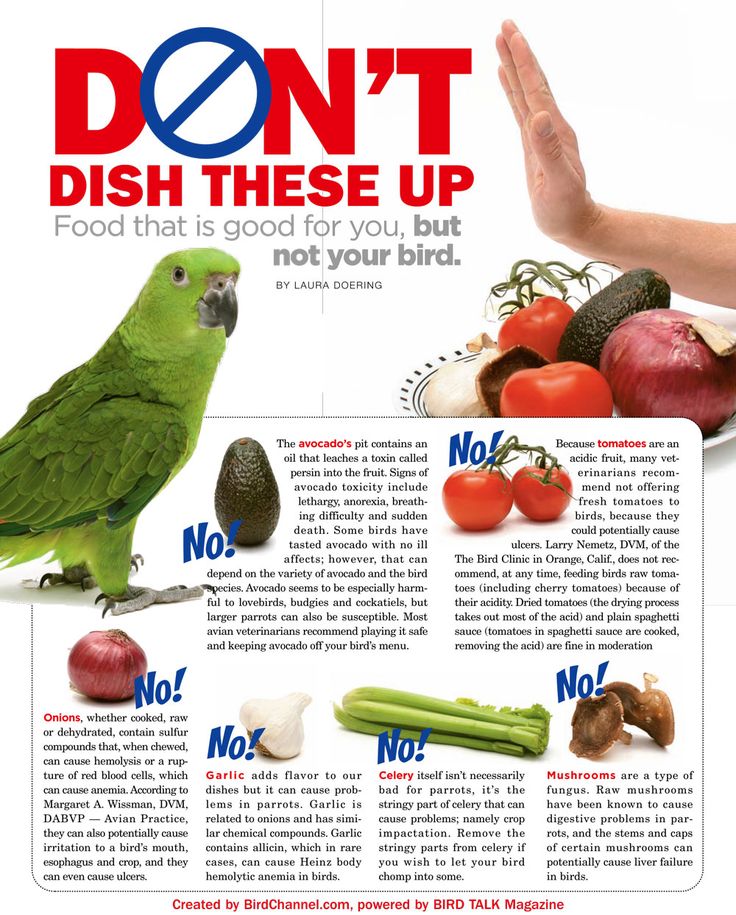 In addition to seeds, they like raw unsalted lard or meat. Around the feeders behaves quite carefully.
In addition to seeds, they like raw unsalted lard or meat. Around the feeders behaves quite carefully.  Inhabits various forested areas. In winter, it feeds on pine and spruce seeds, and is a frequent visitor to bird feeders in parks.
Inhabits various forested areas. In winter, it feeds on pine and spruce seeds, and is a frequent visitor to bird feeders in parks.  Spruce and pine seeds predominate among the stocks, but there are also stocks of animal feed. A very rare visitor to the city feeders.
Spruce and pine seeds predominate among the stocks, but there are also stocks of animal feed. A very rare visitor to the city feeders.  They live in small flocks of 7-10 birds. The bullfinch feeds more often on seeds, buds and berries.
They live in small flocks of 7-10 birds. The bullfinch feeds more often on seeds, buds and berries.  In summer, the fieldfare feeds on insects, worms, mollusks, spiders, and in the fall it switches to a variety of berries, especially loves mountain ash. In winter, many birds roam the gardens, parks and yards in search of food.
In summer, the fieldfare feeds on insects, worms, mollusks, spiders, and in the fall it switches to a variety of berries, especially loves mountain ash. In winter, many birds roam the gardens, parks and yards in search of food.  The best option is to hang the feeder on a tree branch. You can place the feeder on the balcony, outside the window or fix it on the wall, pole.
The best option is to hang the feeder on a tree branch. You can place the feeder on the balcony, outside the window or fix it on the wall, pole. 
 Top dressing stops with the appearance of the first thawed patches on the ground.
Top dressing stops with the appearance of the first thawed patches on the ground. 




